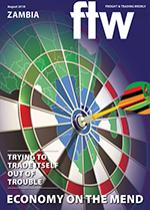In 2017, Zambia’s economic growth recovered to an estimated 3.9% (from 3.8% in 2016) on the back of a bumper crop harvest and better electricity supply, according to the World Bank.
Both the power shortages and the reduction in agricultural exports were due to a prolonged drought which affected much of southern Africa.
However, faster economic recovery was hindered by large government payment arrears which exerted pressure on the financial sector, as well as importers and exporters who were kept waiting for VAT refunds. One of the main risks to the economic revival is rapidly rising external debt servicing costs against the backdrop of a weakening kwacha and dwindling foreign exchange reserves.
FocusEconomics panellists expect GDP to grow 4.1% in 2018, and 4.5% in 2019. The African Development Bank’s African Economic Outlook says stability in the mining industry started returning from 2016, and this is expected to support copper investment and production in 2018.
“Ongoing energy reforms, driven by higher electricity tariffs, will continue into 2018 while revisions to the Electricity Act and the Energy Regulation Act will increase guidance on grid access and encourage private sector involvement,” it states.
Export earnings have withstood pressure from the downward trend in copper prices stemming from intensifying trade war fears. Moreover, the PMI for June signalled a continued robust expansion in private sector activity amid stronger demand conditions, according to the bank.


